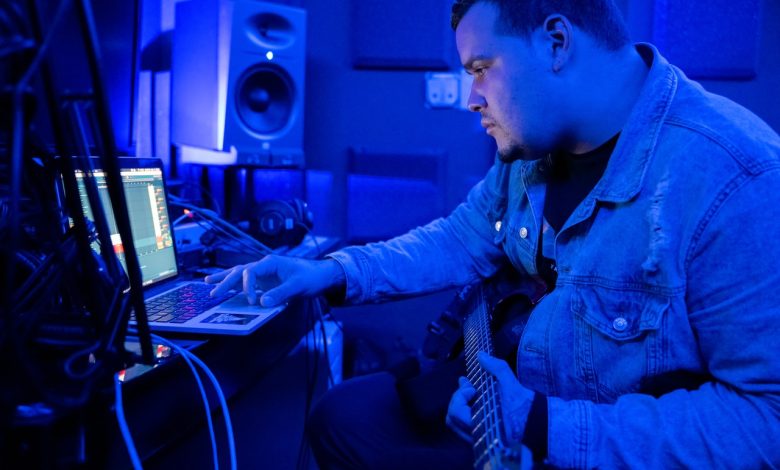
Podcasts are the true form of media consumption for the 21st century. Who would’ve guessed that a format most akin to a radio talk show would capture so much momentum with 3D, VR, AR, and all kinds of media options available?
Nevertheless, it seems that podcasts are here to stay as most of us enjoy the long-form approach that is a rarity these days.
The added benefit of not being forced to look at the screen while enjoying a podcast makes it perfect for our busy modern lives.
When it comes to artists, they are struggling to find their financial footing in the digital age.
Sure, you can take many possible paths to earn revenue as an artist, but are they enough to cultivate long-term fans and a steady revenue stream?
One of the ways artists can supplement their finances is through podcasts. Let’s take a look at the various approaches an artist can make money through podcasts.
Artists taking on the role of the media

With so many social media channels available to an average person these days, it was only a matter of time before artists found ways to keep the general public’s attention without relying on traditional media.
Podcasts are a great way to do this. It gives artists the space to talk about their projects at length without being interrupted or sidetracked by journalists.
Streaming platforms, like Spotify, Amazon Music, and Apple Music, already facilitate releasing content and improve availability. They are also home to many successful podcasts, including the migration of the legendary Joe Rogan Experience podcast to Spotify (which we can view as an artist-run podcast since Joe is a standup artist).
This means that the success of an artist’s work needn’t come before the success of their podcast.
They can start building their reputation by providing educational content related to their art and thus build an audience and boost streaming numbers for their music (or sales for any other art form they might be working on).
Keep in mind that the podcast sphere is massive. Fast Company released statistics showing over 500,000 different podcasts are active right now and 18.5 million episodes available. These are stats from 2018, and since then, podcasts as a media format have grown significantly, getting more attention worldwide.
This means that the competition is fierce, but it can be done without investing too much time and money with proper audience cultivation.
Sponsorships
Functioning within this hybrid role of an artist and an educator, they open up space for additional revenue through sponsorship.
While the revenue streams for artists have long been established, podcasts add a new dimension because sponsors can compete for advertisement space within the show itself.
The sponsorships for podcasts can come in a variety of forms. The most common is a particular episode being sponsored by a specific brand.
This approach can also be agreed to stretch out over multiple episodes or even a series of episodes, possibly even making the series be related to what the sponsor is pushing (in broader, educational terms).
Of course, a more extended sponsorship brings in more revenue.
You can even have multiple sponsors for an episode or a series, provided they don’t sell conflicting products and services.
Premium and exclusive content

https://www.pexels.com/photo/musician-using-laptop-while-working-on-tune-3889053/
Most podcasts are free, and this should remain the case across the board.
Still, this format does allow some room for exclusive and premium content. When it comes to podcasts run by artists, this makes even more sense.
This is because they usually have behind-the-scenes content that they can share as exclusive content.
For example, the recording process gaziantep escort for an album can be a great way to attract more attention while getting a few bucks from premium subscribers.
Usually, this kind of thing is attractive to hard-core fans and people who are artists of their own accord.
The hard-core fans get a more intimate experience with the artist and their process, while other artists are there to learn more about how this particular artist approaches the recording of their album.
Patreon pledges and subscriptions are usually the way to cultivate this type of monetization method.
Affiliate marketing
While affiliate marketing is usually associated with blogging, there is absolutely no reason why this approach couldn’t be applied to podcasts.
Most podcasts have a website of their own where they provide additional info about their podcast and, in some cases, even upload their content avoiding streaming platforms.
The website is a perfect place to insert some affiliate links and earn money without compromising your content. Still, this isn’t the only option. You can include affiliate links in ads, transcripts, and even videos themselves.
This is a great way to start earning money even if you don’t have a large following, making this approach perfect for those just starting.
Conclusion

https://unsplash.com/photos/Hg3BHX6U5jg
Artist podcasts are still a novelty, but they seem destined to grow.
They are a perfect way for artists to showcase the value and effort behind their artistic expression.
They allow them to control the environment in which their art is presented and give them the freedom to elaborate on the more nuanced aspects of their work.
When we pair this with the opportunity to make independent income and boost revenue from their primary work as artists, we get a match made in heaven.
Still, this isn’t something you can do without putting in the necessary work.